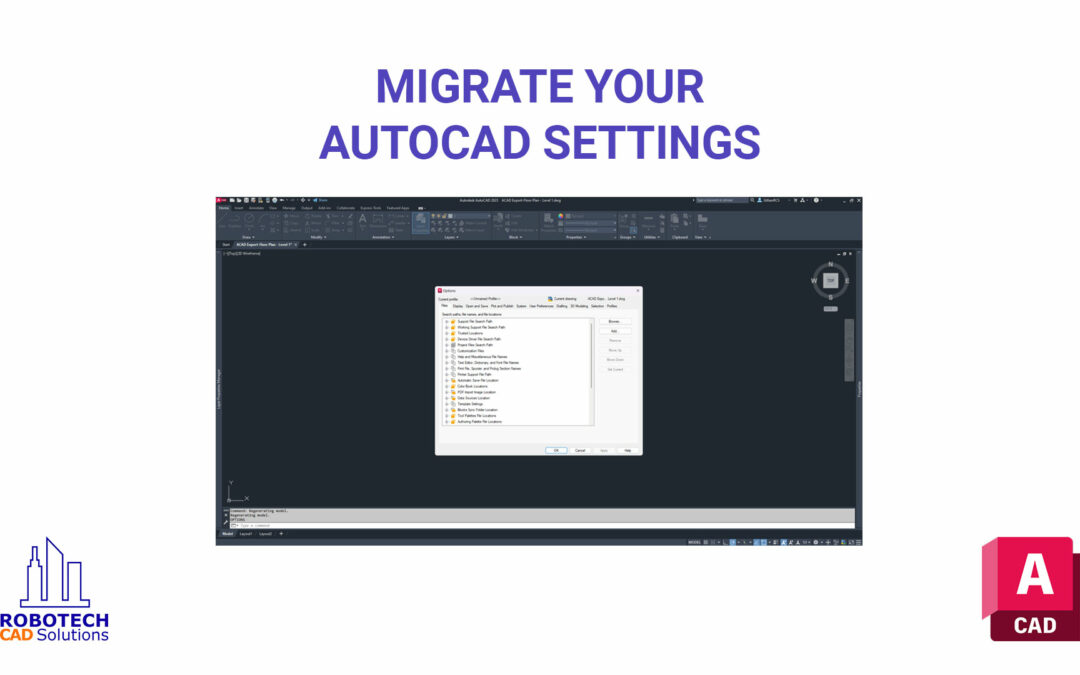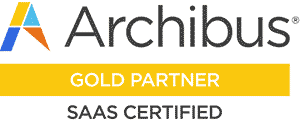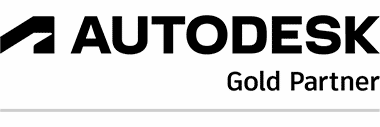
by Gillian Tolentino | Nov 15, 2023 | Facilities Management

Young pharmaceutic seller explaining something to doctor in a hospital.
In the dynamic landscape of the healthcare industry, fostering workplace flexibility is paramount to meet the diverse needs of both healthcare professionals and the organizations they serve. Here, we delve into five key strategies aimed at creating a more adaptable and responsive healthcare workplace.
Flexible Scheduling Options:
Flexible scheduling lies at the core of workplace adaptability in the health care sector. Compressed workweeks, allowing professionals to condense their standard hours into fewer days, provide extended weekends or additional days off. Part-time schedules cater to those seeking a balance between personal and professional commitments, while job-sharing arrangements enable collaborative responsibility sharing among employees.
Telecommuting and Remote Work Opportunities:
The integration of telecommuting and remote work options introduces a new dimension to workplace flexibility. Administrative roles, such as billing and scheduling, can be seamlessly executed from home, enhancing work-life balance. Additionally, telehealth services offer healthcare practitioners the chance to provide remote care, expanding the reach of services and granting professionals the flexibility to work beyond traditional clinical settings.
Cross-Training and Skill Diversification:
Investing in cross-training initiatives is crucial for building a versatile healthcare workforce. Comprehensive training programs empower professionals to develop skills beyond their primary roles, fostering personal and professional growth. Skill-based task delegation ensures that multiple team members are adept at handling essential responsibilities, promoting resilience during times of increased workload or unexpected absences.
Flexible Leave Policies:
Leave policies play a pivotal role in employee well-being. Unlimited paid time off (PTO) alleviates the stress of limited leave, allowing healthcare professionals to prioritize their well-being and attend to personal matters. Furthermore, flexible use of accrued leave, such as half-day increments or intermittent days off, empowers staff to tailor their time away from work to suit individual needs, contributing to a healthier work-life integration.
Technology Integration for Workflow Efficiency:
Embracing technological advancements enhances workflow efficiency, a critical component of workplace flexibility. Electronic Health Records (EHRs) streamline data management, enabling professionals to access patient information securely from various locations. Telemedicine platforms facilitate remote care delivery, expanding access to services and supporting a more flexible approach to healthcare. Collaboration platforms, fostering effective communication and coordination, enhance connectivity among healthcare teams, regardless of their physical location.
In conclusion, creating workplace flexibility in the health care industry is a multifaceted endeavor that involves reimagining scheduling practices, embracing remote work options, investing in skill development, refining leave policies, and leveraging technology. By implementing these strategies, healthcare organizations can cultivate environments that empower their workforce, enhance job satisfaction, and ultimately improve the delivery of patient care.
Let Robotech CAD Solutions help you find your solution for workplace flexibility. Send a message to info@robotechcad.com or call us at 201-792-6300.

by Gillian Tolentino | Nov 7, 2023 | Facilities Management

As the world continues to recover from the effects of the pandemic, organizations are struggling to bring employees back into the office. Remote work has become the norm for many, and it is no secret that many employees do not want to give up the level of flexibility that working remotely has provided them. So, how can workplace leaders encourage these employees to return to the workplace? The answer lies in consistent, data-driven optimization of your portfolio.
To help you strategize your next workplace initiatives, we will explore three expert-curated strategies to get people back into the office and create a more dynamic, collaborative, and effective workplace.
1. Force high usage by shutting down areas
With global occupancy rates hovering around 12%, it continues to be difficult to uncover how employees want to work. Though this strategy will not directly lead to more employees returning to office, forcing high usage through strategic area shutdowns and consolidation is the foundation of building an office that employees will want to return to. By temporarily shutting down specific spaces, floors, or even entire buildings, you will create higher usage rates in the remaining areas that will uncover more pronounced insights into employee preferences, behaviors, and patterns.
A neighborhood or team-specific approach can be highly effective in this context. By assigning specific days for different teams or departments to work in the consolidated office, organizations can encourage team collaboration and foster a sense of belonging while creating a deeper understanding of occupancy patterns and trends, especially those from team to team.
To explore this strategy, you need to first determine what areas of your workplace you should shut down. Utilize the following steps as a good foundation for how you can make this decision with intent:
- Define your objectives: Clearly articulate the goals you aim to achieve through this experiment. Are you looking to swap unused space types for new ones? Do you want to realize the impact of design on space usage? Identifying your objectives will help guide your decision-making process.
- Analyze your occupancy data: If you have an existing means of data for your workplace, such as an Occupancy Intelligence Platform, utilize its data to analyze occupancy patterns. Look for trends such as underutilized floors and space types. Also, keep in mind your build’s total capacity usage to help determine how many spaces you can reasonably shut down without causing overcrowding.
- Prioritize based on potential ROI: Rank the floors and spaces you want to remain open based on their potential for generating pronounced insights. As general guidance, closing down an equal balance of popular and unpopular spaces can give you a better idea of how employees would behave in a smaller office space. Closing down the most unpopular spaces can create more pronounced insights as to what popular spaces employees enjoy the most and why they are so greatly enjoyed.
By experimenting with workplace availability and analyzing the resulting data, organizations can better understand how to optimize their office space for employee preferences and productivity.
2. Prioritize optimizing for collaboration, design, and well-being
Organizations must focus on creating office experiences that make commuting worthwhile. To achieve this, prioritize optimizing collaborative spaces, as collaboration is one of the primary motivators for employees to work in-office and it helps enhance company culture. Design is also regarded as one of the most inspiring factors for employees to make the commute.
Though it may not directly correlate to more employees coming into the office, well-being must be at the forefront of your strategy too, as transitioning from remote to hybrid/in-person work can be difficult for employees. By offering spaces that focus on wellness, organizations have the opportunity to build an empathetic work culture through the built workplace.
Optimize for collaboration
- Provide a diverse range of collaborative spaces: Offer a mix of open and private collaborative areas, meeting rooms, and huddle spaces to address various collaboration styles.
- Equip spaces with advanced collaboration tools: Incorporate technology-enabled solutions in collaborative spaces, such as interactive whiteboards, video conferencing systems, and space availability kiosks.
- Encourage team bonding and informal interactions: Create comfortable social spaces, such as lounges and cafes, to promote spontaneous conversations and team-building activities away from the traditional office setting.
Optimize for design
- Create inspiring and visually appealing workspaces: Incorporate natural lighting, modular furniture, and unique decor to create a beautiful and inspiring in-office experience.
- Reflect company culture and values through design: Use design elements that align with the organization’s values and culture, such as branding, colors, and themed spaces, to inspire pride in employees and reinforce a sense of identity.
- Implement sustainable design elements: Integrate natural elements, such as plants, greenery walls, natural materials, and water features, to enhance employee well-being and create an office space that is environmentally friendly.
Optimize for well-being
- Focus on employee comfort: Invest in ergonomic furniture, standing workstations, and adjustable temperature/lighting controls to provide employees with comfortable, customizable environments.
- Provide health-oriented spaces and initiatives: Offer on-site wellness programs and facilities, such as gyms, yoga rooms, meditation spaces, mother’s rooms, nap pods, and quiet spaces to promote employee physical and mental well-being while in the office.
- Encourage movement: Design the office layout to promote movement, such as strategically located break rooms and social areas, to stimulate circulation and prevent sedentariness.
Regularly seek employee feedback and continuously adapt and adjust to evolving employee needs. Open lines of communication and a willingness to improve the office environment can foster a strong sense of belonging and commitment among employees.
3. Utilize artificial intelligence (AI)
In today’s fast-paced and ever-changing world, harnessing the power of artificial intelligence has given businesses additional tools to help them stay ahead of the curve. AI has proven to be a game-changer, revolutionizing work processes and enabling faster, easier, and more confident decision-making. From writing emails to coding and writing spreadsheet formulas, AI streamlines tasks across all job functions and industries.
The use of AI in the workplace industry can help further transform the decision-making process from being assumptions-based and time-consuming, to being data-driven and fast-paced. Just recently, VergeSense announced their collaboration with ChatGPT to leverage AI in analyzing workplace occupancy data, resulting in quicker and more confident decision-making without needing to manually analyze data.
By utilizing AI in your workplace to streamline data analysis and decision-making, you can better adapt to every-changing employee needs and build a workplace built on your workforce’s actual behaviors.
Create data-driven results
As the post-pandemic workplace continues to evolve, organizations have a unique opportunity to reshape their office spaces by building strategy and decisions around employee experience. By experimenting with workplace availability, optimizing spaces for the ideal in-office experience, and utilizing AI for data-driven decision making, organizations can create a greater demand for in-office work and foster a more dynamic, collaborative, and innovative working environment.

by Gillian Tolentino | Nov 2, 2023 | Autodesk, Tutorial
In this tutorial, we’ll cover how to migrate your AutoCAD settings using the AutoCAD Migration tools. Whether you are upgrading to a new AutoCAD Version or transferring to a completely different system, keep your workflow going by migrating your current settings.
The AutoCAD Migration Tool allows you to migrate custom user settings from an older release year of AutoCAD to a newer release year of AutoCAD on the same machine. The old release year must be on the computer when the new install is opened for the first time.
When to use: SAME COMPUTER. SAME VERSION. NEWER RELEASE YEAR OF AUTOCAD
Example: AutoCAD 2019 is already in use, and you are now installing AutoCAD 2020 on the same machine.
Migration Utility Process:
- Download, install and open the software
- When the settings migration wizard pops up, it will ask if you want to migrate your custom settings. You will see check boxes next to multiple customization elements that are able to be migrated. Make sure there are checks in the boxes next to the items you want to migrate. Uncheck any items that you don’t want to migrate. When your migration settings are all set, click the checkmark button on the bottom/right to proceed with the migration and follow the prompts on the screen
Other options if the wizard does not pop up or if it is accidentally skipped:
- Open the start menu, go into the all apps, open the Autodesk folder with your new AutoCAD version and release year and then click the button that says “Migrate from a previous release” and follow the prompts on the screen
![AutoCAD Tips | Edit Attributes in Excel: Export and Import Attributes [Video: 5.13]](https://www.robotechcad.com/wp-content/uploads/2023/12/04_export-acad-attributes_hd-1080x675.png)
by Gillian Tolentino | Oct 25, 2023 | AEC, AutoCAD, Autodesk
In this tutorial, we’ll walk through how to use the Import and Export Attribute tool within AutoCAD to easily export block attribute data to a .txt file that can be quickly edited in Excel. This can save a ton of time if you need to modify multiple attributes of your blocks at one time. It can also come in handy when needing to create parts lists, take offs and quantities.
Using blocks with attributes allows you to export the parameters to a text file that can be manipulated in Excel. The updated parameters can then be loaded into the blocks again. This can only be done if you have the full AutoCAD license with the express tools. Express tools are capabilities that other people programmed but that are included with the full AutoCAD license. Explore and use them to your benefit.

by Gillian Tolentino | Oct 25, 2023 | AEC, Architecture, Autodesk
With employee turnover rates reaching all-time highs, companies are making employee retention a priority as older employees are set to retire within the next decade. Holding on to current employees is less expensive than hiring and training new ones. One way to retain employees is to offer opportunities to employees to continue their education, training or certifications.
The facilities management industry in particular is facing a challenging workforce outlook. Continuing education is an effective way to enhance the skills of the next generation, says Jake Smithwick, Ph.D., MPA, an assistant professor at the University of North Carolina at Charlotte.
For example, the University of North Carolina at Charlotte offers a 100 percent online construction and facilities engineering master’s degree designed to help working professionals earn a master’s degree on their own schedule. The program also covers some of the industry’s most relevant topics, including RFP development, safety, BIM, sustainability, team development and more.
“Technology will undoubtedly play a role in overcoming workforce challenges, but it can’t replace the ingenuity and innovative value that individual facility professionals bring to their organizations,” Smithwick says.
The university is also launching a new research project to better understand the personality profiles of facility professionals to assist in the hiring process and identify future leaders in the field, he adds.
Training and educating staff is a strong tool for employee retention, because it helps employees stay current in the industry, learn new ideas and implement those ideas to benefit the organization and their team, says Alana Dunoff, president of AFD Professional Services and instructor in the facilities management program at Temple University. Having a staff that is continuously growing is an asset to the entire organization, she adds.
Employers can help employees continue their education by offering opportunities to earn education credentials, attend conferences, webinars, programs and events, earn degrees and licenses (associate, bachelor, master, doctorate, etc.), participate in training, get access to resources, whether financial or otherwise, get access to memberships and more.
“Employees that have the opportunity to learn, earn a credential, attend conferences etc., often feel highly valued by their organization and if they are also recognized for their success that continues to build on a sense of belonging and appreciation – which is a terrific way to encourage retention,” Dunoff says. “If we feel valued, we will return that with loyalty. Regardless of where you are in your career, we all want to feel valued for your contribution and appreciation for the knowledge and expertise that we bring to work each day.”
Continuing education opportunities are a relatively inexpensive way to invest in the growth and professional development of employees, and it is also a strong recruiting tool, says Dunoff.
“If a potential hire knows they will be able to continue their learning, that may be an additional incentive to accept an offer,” she adds.
There are numerous ways that offering education opportunities to employees can benefit employers and employees, and prioritizing them can help organizations grow internally and externally and keep their employees along the way. Retaining employees saves money and helps build stronger relationships, which leads to more success.






![AutoCAD Tips | Edit Attributes in Excel: Export and Import Attributes [Video: 5.13]](https://www.robotechcad.com/wp-content/uploads/2023/12/04_export-acad-attributes_hd-1080x675.png)




